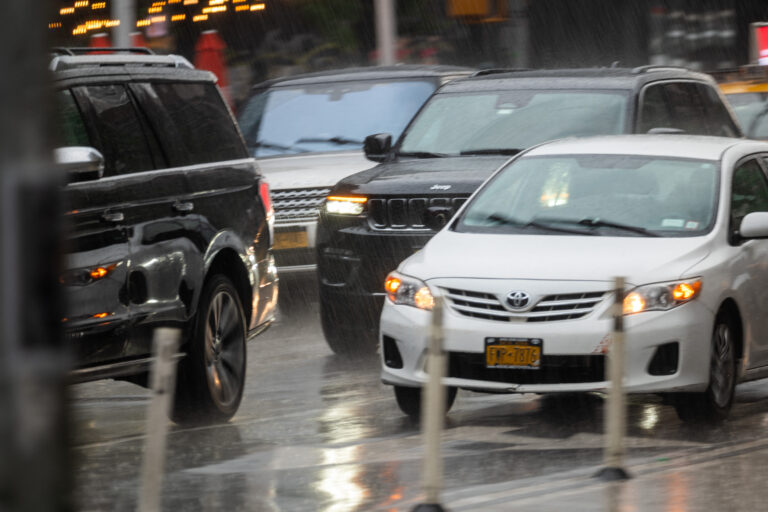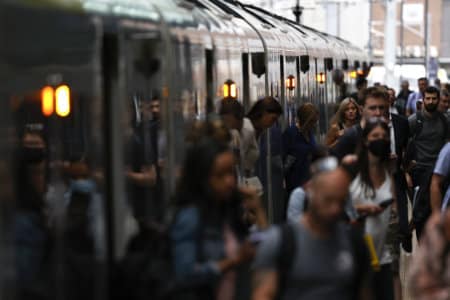
Many good student cities have comprehensive public transportation systems, such as buses, trains, or trams. However, not every study abroad destination offers the same conveniences.
Places in Chicago, like Northwestern University, DePaul University, and Loyola University Chicago, are great, walkable areas with shuttle buses and the Metra train system for transportation. Tokyo’s public transport system is famed too — any non-Japanese-speaking person can navigate the city easily enough.
On the other hand, if you find yourself in a more secluded place away from the hustle and bustle of businesses, you might face the challenge of getting around town, buying groceries or even attending classes, especially for those who don’t live on campus.
So before applying for university overseas, ask yourself these questions:
- Will you be staying on campus, or will you need to take public transport to classes?
- Does public transportation reach all the places you need to go, including university, accommodation, groceries and hangout spots?
- How often do the buses or trains run, and how early or late do they operate?
- How easy is it to navigate public transportation – will there be signs and announcements in your preferred language, or would you have to learn some basic phrases?
If the conclusion is that public transportation is difficult, you may either need to find alternatives like different universities, closer accommodation, or simply rent a car.
For that, you would need an international driver’s license permit.
An introduction to the international driver’s license permit
When you’re overseas, being able to drive can certainly be a game changer.
Many countries have companies that rent cars to customers, especially international students and their families. You can book cars for a day or even months, depending on your agreement with the rental company.
Not only is it faster and more convenient to get around, but it’s much more comfortable than taking a bus or train. Plus, you can do so much more, like visit attractions and tourist sites whenever you want to or even drive out of state for weekend or summer getaways.
But, of course, it’s not as simple as taking your national driver’s license abroad with you. Even if you have 10 or more years of driving experience, it won’t mean anything if you don’t possess an international driver’s license or permit (IDP).
Here are some commonly asked questions about the international driver’s license permit:
What is an international driver’s license permit?
An IDP will allow you to drive internationally. Even though it’s called a permit, it would be more accurate to call it a translation document that complements your home license, thus allowing you to drive abroad.
Do I need an international driver’s license permit in every country?
Not all countries require an IDP, such as Denmark, France, and Bulgaria, to name a few. Remember to always research the country you’re travelling to.
Do I need a regular driver’s license before applying for the international driver’s license permit?
The short answer: yes. There is no feasible way for you to get an IDP without a valid driver’s license. When driving overseas, you must present your international driver’s license permit alongside your home country’s driving license.
How long does an international driver’s license permit last?
It typically lasts for a year, but some last up to three years as long as your home country’s license is still valid.
Is there more than one kind of international driver’s license permit?
There are two different types of IDPs based on two international treaties – the 1949 Geneva Convention and the 1968 Vienna Convention. 1949 format IDPs have a validity of only one year, while the 1968 format documents can last for up to three years, as long as your original country’s licence is still valid for that time.
You must check if the country you are studying abroad in is a signatory of the 1949 Geneva Convention IDP or the 1968 Vienna Convention IDP. View the full list here.
Do I need to have a physical international driver’s license permit?
It’s generally safer to have both a digital and printed copy of your IDP. Since you may lose your printed copy, a digital one would be useful. On the other hand, if you happen to lose your phone or have no battery, a printed copy will still be enough as proof.
Do I need to have an international driver’s license and permit to rent a car?
Most car rental companies require your IDP along with your regular driver’s license to rent a car in a foreign country. Expect a hefty fine or similar legal repercussions if you drive a rented car without an IDP, and even worse if you get into an accident.
Where do I get an international driver’s license permit?
Each country has their own specific offices and official organisations that are authorised to issue international driver’s licences.
Alternatively, you can visit the International Drivers Association to learn more and apply for one.

If you’re from a tropical country, you’ve probably never driven through a snowstorm. Source: AFP
Things to note before driving abroad
If you’ve gotten your international driver’s license permit – congratulations! You’re halfway through mastering the art of driving overseas. But there are some things you might want to read up on before you hit the road.
Research local laws and regulations
You must research traffic laws in the country you’re studying abroad or visiting, as they may differ significantly from your home country. The easiest example is that not every country in the world drives on the same side of the road.
Familiarise yourself with road etiquette, common road signs, and speed limits – they may be different from what you’re used to. Even some traffic lights may not have the same colour, like how Japan has blue traffic lights instead of green.
Take note of what you’re driving
Roads are one thing, but cars are another. Whether you’re renting from a company or borrowing a friend’s car, make sure to check what type of fuel it runs off – it’s only good courtesy to return a car with a filled tank, especially if it’s a friend’s.
If you’re renting a car, a good practice is to snap some photos of the car’s condition before you set out so that you have proof that you are not liable for any scratches or dents.

It would be a real disaster if you woke up to see your rental car submerged in water after a storm. Source: AFP
Weather conditions
This is for international students who have never driven in snow or sandstorms. If you’re unfamiliar with driving in extreme weather conditions, it would be better to stick with public transportation or gig drives like Uber.
Health insurance
Look into a comprehensive insurance plan – either travel insurance or international health – to ensure your coverage while overseas. While this should naturally be a requirement to look into before travelling abroad, the risk of accidents is higher when you plan to drive overseas.
If all this is starting to sound a little scary, don’t worry – there are still many countries that have excellent public transport systems. If you want to get your steps in while studying overseas, here are some great countries with excellent public transport.

London’s iconic red double-decker buses are the locals’ favourite form of transportation. Source: AFP
Countries with the best public transport systems
Besides Japan and the US, there are several other countries with great public transport systems.
England
The country has a robust public transportation system, complete with trains and even long-distance coaches for extensive journeys. Within cities, you can use buses, trams, and taxis to get around – hop onto one of those bright red double-decker buses you always see in movies.
A special shoutout to London’s iconic London Underground — it’s easy to use and a remarkably efficient way to get from one end of the city to the other.

A large part of Hong Kong’s crowd consists of tourists coming in from the mainland to visit. Source: AFP
Hong Kong – Special Administrative Region of China
An increasing population in a small land area makes private transport difficult in Hong Kong. Luckily, Hong Kong has one of the best public transport services in the world.
The Mass Transit Railway serves over 166 stations with minimal delays and disruptions, operating with efficiently designed interchanges to ensure a smooth flow of passengers. The trains run every two to four minutes and operate from six to one in the morning.
Sweden
Sweden has one of the best public transport systems in the world, complete with buses, trams, metros and ferries.
Congestion is not a major issue either, which is great news for those who wish to obtain an international driver’s license permit here.

Singapore’s MRT system is now an integral part of the locals’ daily life. Source: AFP
Singapore
Similar to Hong Kong, Singapore is a small land mass with a growing population. Thankfully, they have an unparalleled traffic management system and excellent public transport systems.
The Mass Rapid Transit has more than 140 stations and is very well maintained, with trains operating at a frequency of two to three minutes apart. The bus system is equally excellent, with over 5800 buses transporting millions of passengers daily.
Denmark
Even in the most remote parts of Denmark, you’ll find regular and punctual bus and train services. Copenhagen, the capital, shines in particular for its reliable system of trains, buses and waterbuses that transport people around all day long.
The best part? You can pay for everything with a single card – the Copenhagen Card covers public transport across the entire city and is perfect for international students.










